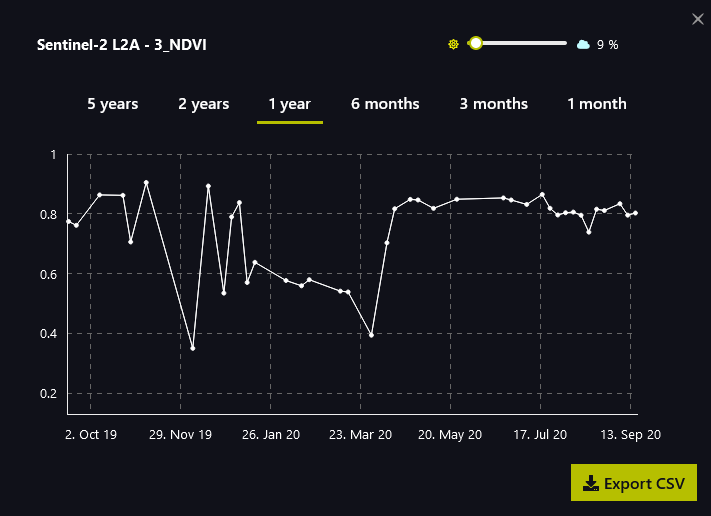I see, thank you for the explanation. I can imagine that this was not the best time to start - but who could have guessed… Good that you made it so far 
Yes, the Level-2A products are currently being processed, but at different pace. So while some parts of the earth are already completely available, only L1C exist for large periods. Technically, you can convert every L1C product to L2A with the sen2cor software. It works best if applied via the command line to entire folders (leave the .SAFE folder as it is, please see here: Sen2Cor-02.05.05-win64 - AttributeError: 'L2A_Tables' Object has no attribute '_L2A_Tile_PVI_File')
But I agree that this is quite circumstantial when you only need such a small subset.
Not sure if that helps, but you can plot the NDVI of an area with the EO browser over time and export the temporal curve as CSV
Maybe you can correlate the NDVI and LAI for a series of available L2A data (e.g. over one year) to check for robust correlation.
